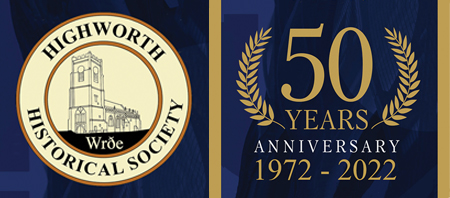Lest We Forget Continued (page 7)
“One of our biggest problems with the vans was the many punctures we experienced due to the well-worn tyres: it was extremely difficult to obtain new tyres, rubber being very scarce. At hay-time and harvest, we worked in the fields often till dusk. I particularly loved shocking the corn. I was extremely fortunate on one occasion when delivering milk with the van in Swindon. Instead of going up Drove Road I turned off to go to my sister’s cake shop in Groundwell Road, (a thing not allowed). Just then the sirens sounded – my sister pulled me and the other Land Girl under the stairs. Then we heard Thud! Thud!
On trying to return to deliver our milk once the “All Clear” sounded, we found our way barred by police and wardens. The bombs had fallen in Drove Road where we should have been delivering. The bungalow of one of our customers had been demolished. When we eventually returned to the farm very late that afternoon, we were greeted with cries of “Here they are.” Apparently Mrs Hollas had been phoning the police and anyone she could, for news of us. She was so relieved to see us safe and well that it didn’t matter to her that we had been caught playing truant. Mrs Hollas had other Highworth people working for her. To mention a few; Hazel Bassett, Joan Breakspear and Vera Cooper, together with Eva Richardson in the garden.
Mrs Hollas was an amazing lady; besides running her farm in the difficult war days, she allowed Australian, New Zealand and Canadian Airmen to spend their leave at Parsonage Farm, something to this day I know many of them remember with great gratitude and very fond memories.
There were other Land Girls in the area and, together with the Home Guard, we put on a pantomime and a concert to raise money for parcels for the Forces. I remember practising bell ringing. The bells were of course silenced during the war, but the Rev. Durston, together with Joan Woodward who later became his wife, decided it would be a good idea to have a team ready so that when victory came, a peal of bells could be rung. Mr Harris, who was church organist at the time, sent out an S.O.S. for help with blowing the organ. Services had to be held on Sunday afternoons because of the blackout and I took a turn together with other Land Girls in pumping the organ. The bellows were hand operated in those days.
I met my husband during the war. Joan Bryant and myself would sometimes cycle to Cricklade after finishing a day’s work, to go horse riding as a form of relaxation. On one occasion two Staff Sergeants from the Glider Pilot Regiment stationed at nearby Blakehill Farm, arrived also to go horse riding. One of these pilots was later killed in the Airborne Landing at Arnhem; the other became my husband. He had seen service in North Africa and Sicily for which he was awarded the M.M. He too took part in the Arnhem campaign. He was one of the few fortunate men to return; of the 10,000 who landed by parachute or in gliders (North of the Rhine) only 1,200 got back across the river. It was a spectacular sight that Sunday morning, 17th September, as bombers towing gliders appeared from all directions, circled over Parsonage Farm before heading off in an Easterly direction. We all wondered what was happening; Mrs Hollas turned to me and said, “Jean is this the real thing”. All I knew was that my friend had not met me the night before as arranged so no doubt had been confined to barracks. Later in the day we learnt that the 1st Airborne Division had landed at Arnhem in Holland.
Life in the Land Army was quite strenuous – seven days a week out in all weathers.
Nevertheless I liked the life and was very glad I had the opportunity to be a member of the Land Army and always remember Mrs Hollas with great affection”.
When war broke out in September 1939 and it seemed imminent that the Germans would be carrying out bombing raids on mainland England, the scouts from the Highworth scout troop were used for war casualties by the Rescue Services which, among others, included the Ambulance Service and the Highworth branch of the Wiltshire Auxiliary Fire Service. Most of this training was carried out at the Old Infants school (opposite Southfield School) which was established as a first aid post. One of the Highworth scouts involved in this training was Scout Ted Jefferies, of Kings Avenue, who, along with others, helped teach the AFS and Rescue Service the correct way to tie knots, which was essential as part of the rescue procedure. Before being used as a guinea-pig Ted wanted to be sure they could tie their knots so that he wouldn’t fall. As it was, one of his first jobs with the Rescue service was to be taken up by ladder to the roof timbers inside the school and told to straddle the beams and wait to be rescued. This was done without mishap but worse was to come. In the school playground, Ted along with another scout, was placed in a large wooden box with stones piled on top and around the sides. Eventually the rescue services came along and rescued them. All this was an essential part of the training for recovering people from bombed buildings. He said, for two young lads this was a terrifying experience. Thankfully this never happened for real, but the RS were very highly trained just in case anything happened. The intense training went on for about two years.
5730952 Private George Kenneth COOPER, serving with the Dorset Regiment, DEMS Personnel, died at sea on 21st March 1941, age 25 years.
Having no known grave he is commemorated by name on Panel 62, of the Plymouth Naval Memorial, Devon.
Just prior to the war a government section was formed to plan and organise the defensive arming of the whole British Merchant Navy in co-operation with Ministers and ship owners. Anti U-boat and anti-aircraft guns were collected and distributed. The dockyards prepared the ships for their fitting and naval reservists and Merchant Navy crews were trained in their use. The guns, for the most part, were naval weapons which had been removed from scrapped warships.
At the outbreak of the Second World War another major break with tradition was brought about when the British Army was called upon to assist with the manning of merchant ships. The DEMS (Defensively Equipped Merchant Ships) organisation, which provided merchant ships with guns and gunners as well as training merchant seamen in basic gunnery, was swamped by the massive demands of war and in February 1940 the Admiralty was driven to ask the Army for help. Five hundred infantrymen were formed into two-man Lewis and Bren gun teams and embarked in coasters to give them anti-aircraft defence. In September 1940, the scheme was expanded to place 2,000 men on coasters at sea and a further 2,000 on ships in port.
Private George Kenneth COOPER, serving with the Dorset Regiment, was assigned as a gunner to the merchant ship SS London 11 – a 1,260 ton (Ex-Danish flag) cargo ship – Official No 167517, with its place of Registry London.
The SS London 11 sailed from Eastham on the 20th March 1941 and was bound for Cardiff. The following day the cargo ship was attacked and sunk in the Bristol Channel through bombing by German aircraft at the following co-ordinates Lat 23.30. N 4O30 W.
Also on that day in the Bristol Channel the cargo ship SS Millisle of 617 tons (James Kelly Ltd) was sailing from Cardiff to Cork with coal when she was also sunk by enemy aircraft.


